Ever run your fingers over a piece of basswood furniture and wondered, “Is basswood a hardwood or a softwood?” Dive in with us as we uncover the intriguing world of basswood.
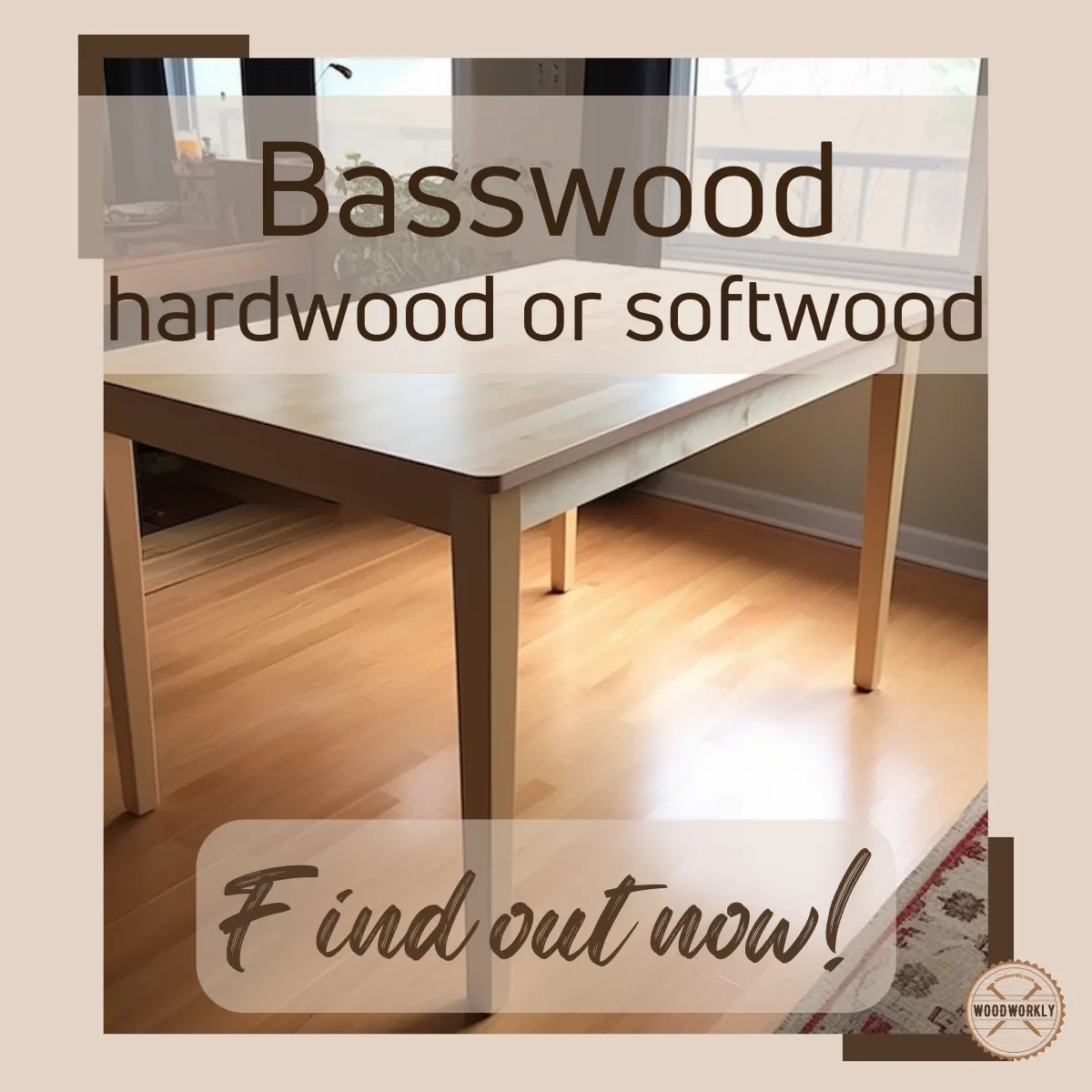
Basswood is a lightweight wood that is mainly used to make boxes, veneers, musical instruments, and other special products.
Since it works really well with woodworking tools like most softwoods, I was curious whether basswood is a hardwood or softwood.
So, I did some research with the help of the experts and now after years of working with basswood, I know a lot to share with you about this awesome wood.
So, let’s discuss, Is Basswood a hardwood?
Yes, Basswood is a hardwood, but it’s known as a soft hardwood because of having low hardness and low density compared to other hardwoods. Basswood has a Janka hardness rating of 410 lbf (1,824 N) and comes from a deciduous tree hardwood family. Basswood is soft, lightweight, and easy to work with.
But there’s a lot more you need to know about the hardness of basswood.

In this article, I’ll widely discuss is basswood a hardwood, and how hard is basswood with its characteristics. Plus, pros, cons, and uses.
I’ll answer some frequently asked questions as well.
So, let’s jump in!
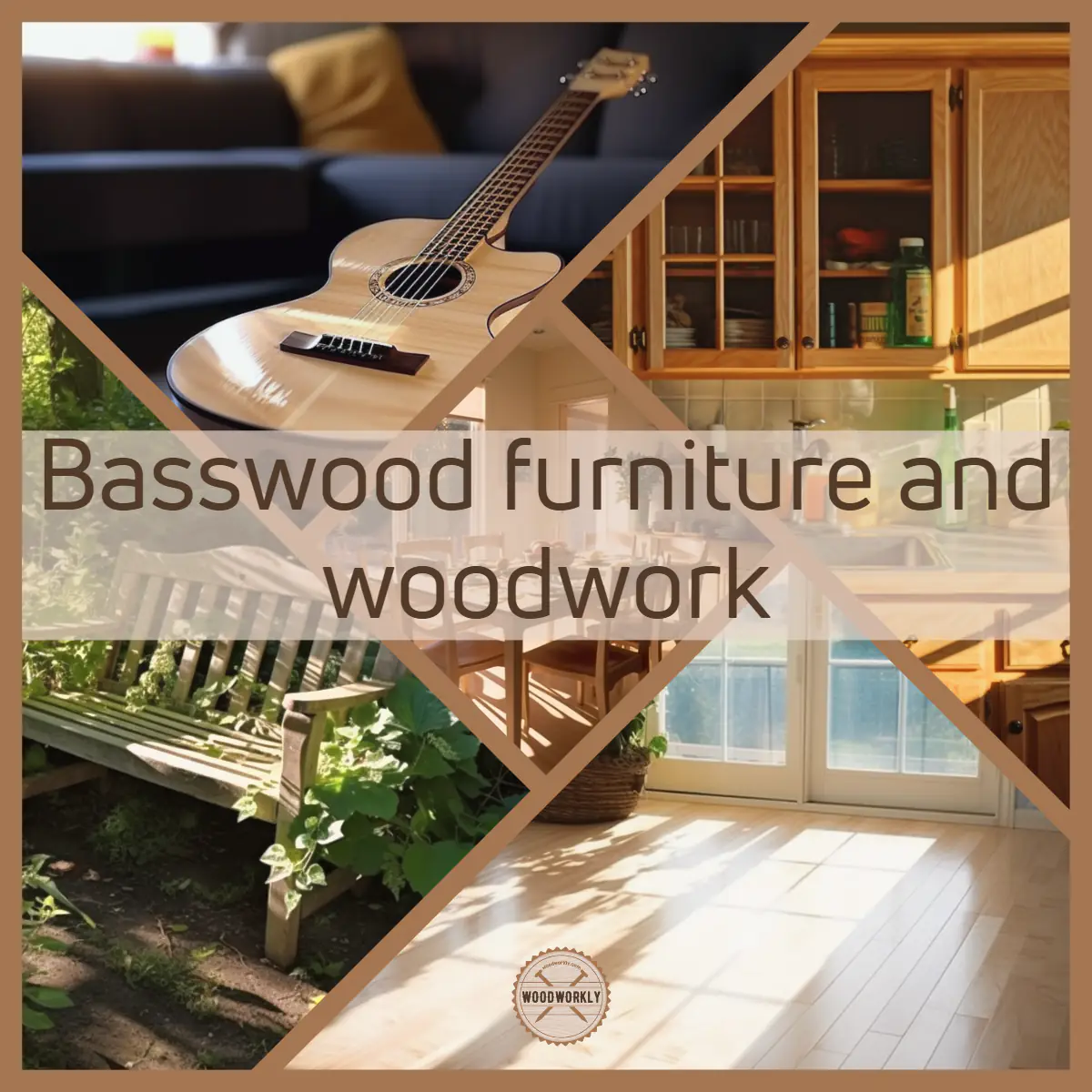
First of all, let’s get a brief knowledge about basswood.
what is basswood?
Basswood, scientifically known as Tilia Americana, is a type of tree native to North America, treasured for its versatile timber.
This enigmatic species often escapes the limelight in timber production discussions, representing just about 5-8% of the total volume.
Yet, its unique characteristics call for a closer look.
A Hidden Gem in the Timber World
Consider basswood the unsung hero of the timber industry.
Its wood is light, soft, and easily workable, making it a favorite among artisans, particularly carvers and woodworkers.
The stability of basswood is another of its star attributes; it holds up well over time, resisting warping and shrinkage.
Unique Characteristics of Basswood
The color of basswood is something to behold. It has a uniformity that’s not commonly found in many wood species.
The distinction between its heartwood and sapwood is subtle, resulting in a harmonious color palette that transitions smoothly from creamy white to a very pale brown.
This uniformity makes it an aesthetically pleasing choice for various applications.
Overcoming Challenges with Modern Machinery
Basswood has had its share of challenges too. In the past, it was considered difficult to finish due to its tendency to develop “fuzzy” edges during sanding.
However, thanks to advancements in manufacturing technology, this issue has been largely overcome.
Now let’s talk about its hardness factor in detail.
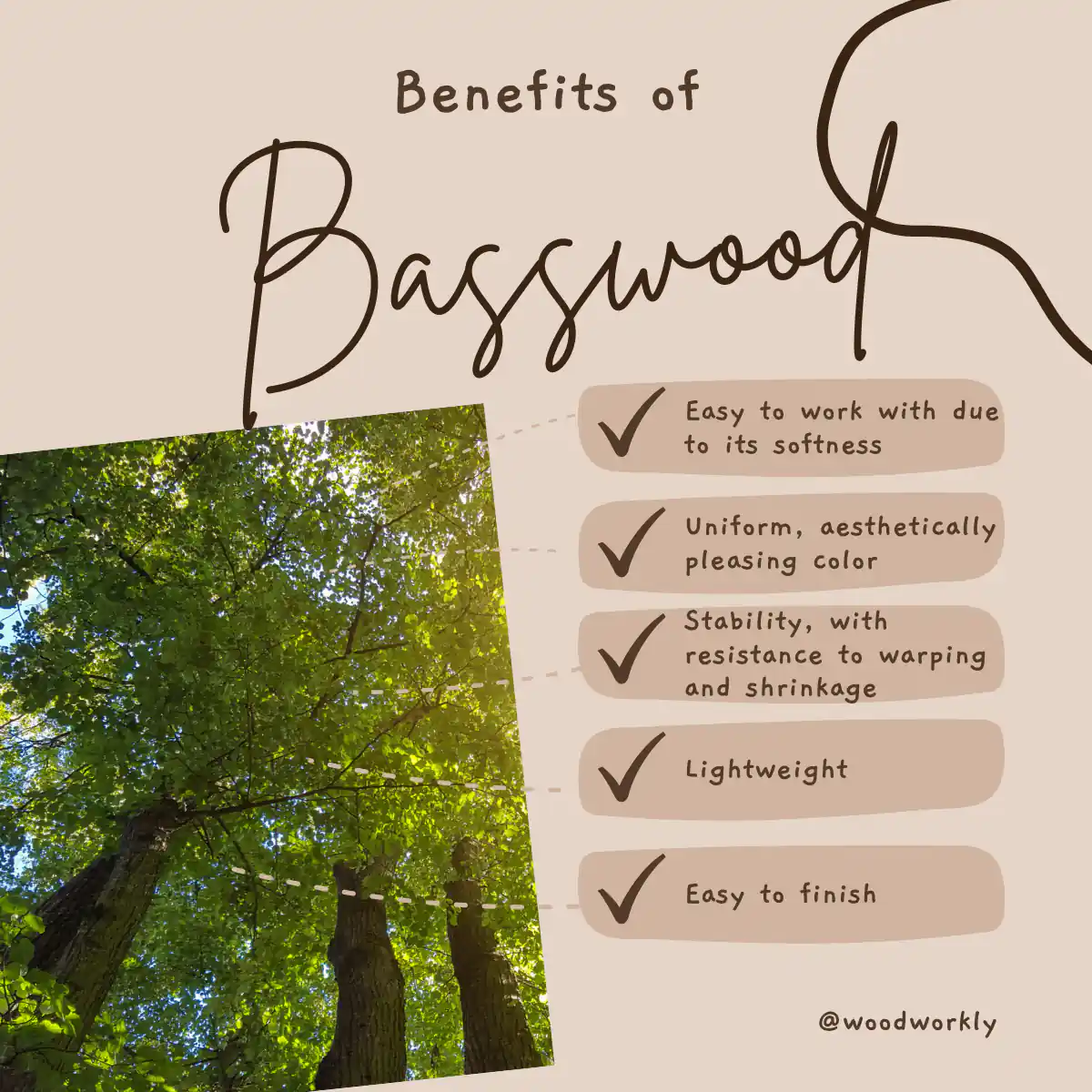
How Hard Is Basswood?
Basswood is considered soft hardwood. It is significantly softer and less dense than most hardwoods.
According to the Janka hardness test, basswood has a hardness rating of 410 lbf (1,824 N) which is significantly less than most hardwoods and softwoods.
For example, Doulas fir is softwood with a Janka hardness rating of 710 lbf (3,158 N) but Basswood is a hardwood with a Janka hardness rating of 410 lbf (1,824 N).
Therefore, basswood is botanically hardwood but commercially a softwood.
I know you’re thinking about why we consider basswood as a hardwood even though it has poor hardness value.
But not every hardwood has high hardness values like Birch, Maple, and Walnut.
Species like Basswood, Aspen, and Chestnut are also considered hardwoods not because of their hardness, but for their fiber structures and deciduous tree family.
Basswood belongs to the hardwood family because it comes from a deciduous tree like all hardwoods and not because of its hardness.
Basswood trees are flowering, nut, and fruit-producing trees with board leaves. They have vessels for the transportation of water.
Plus they have visible pores structure. This is why basswood is known as hardwood.
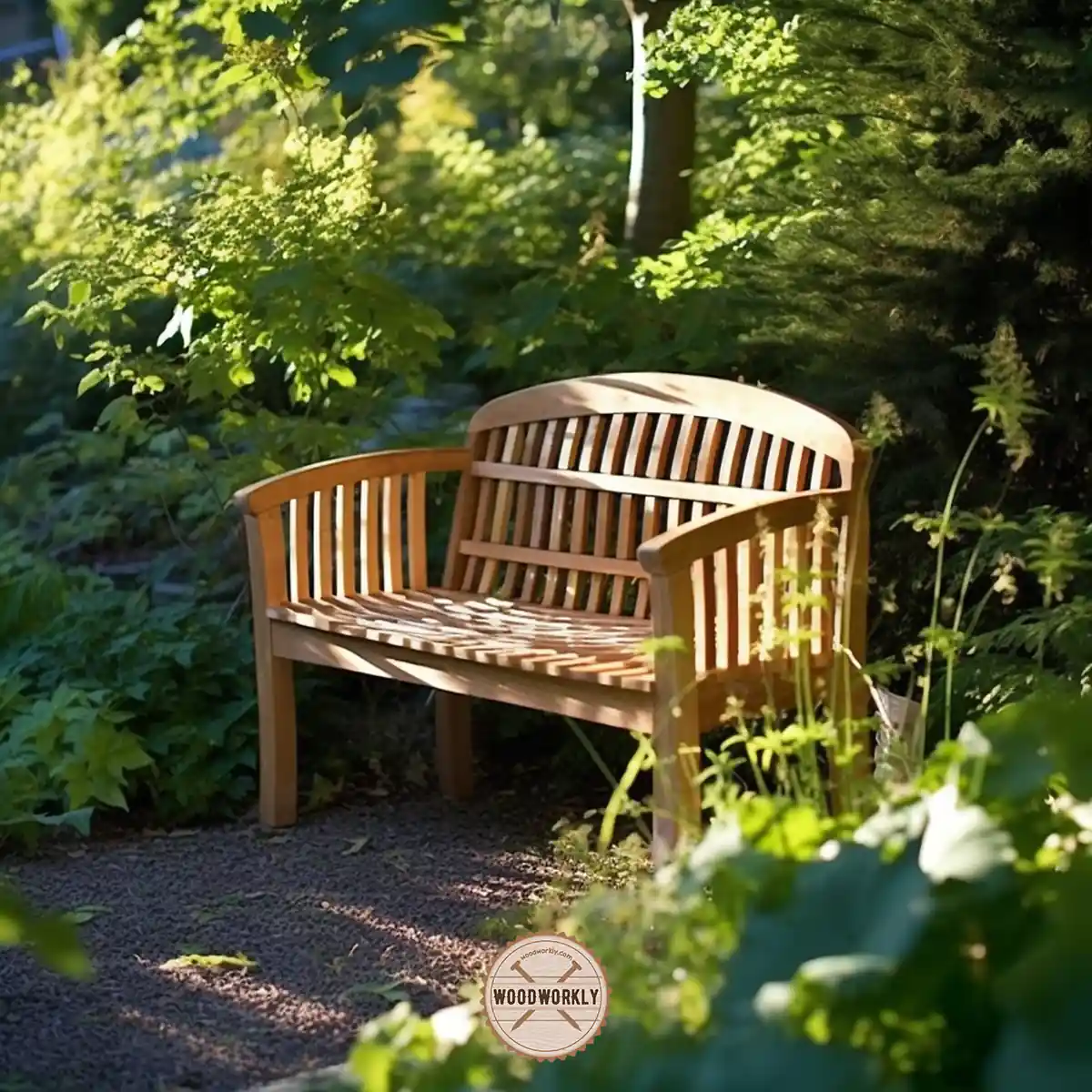
Basswood has a straight grain with a fine even texture. Even though it’s soft and less dense, it has good dimensional stability. Working with basswood is so much easier than with most hardwoods.
You can make woodcuts easily and be able to focus on detail with a steady hand. Therefore, basswood is widely used for woodcarving projects.
So, let’s have a look at the hardness of basswood according to the Janka hardness scale.
Janka hardness test is a standard method of testing the hardness of a particular wood according to its resistance against dents and scratches.
If the wood has high resistance against dents and scratches, it has a high Janka hardness value.
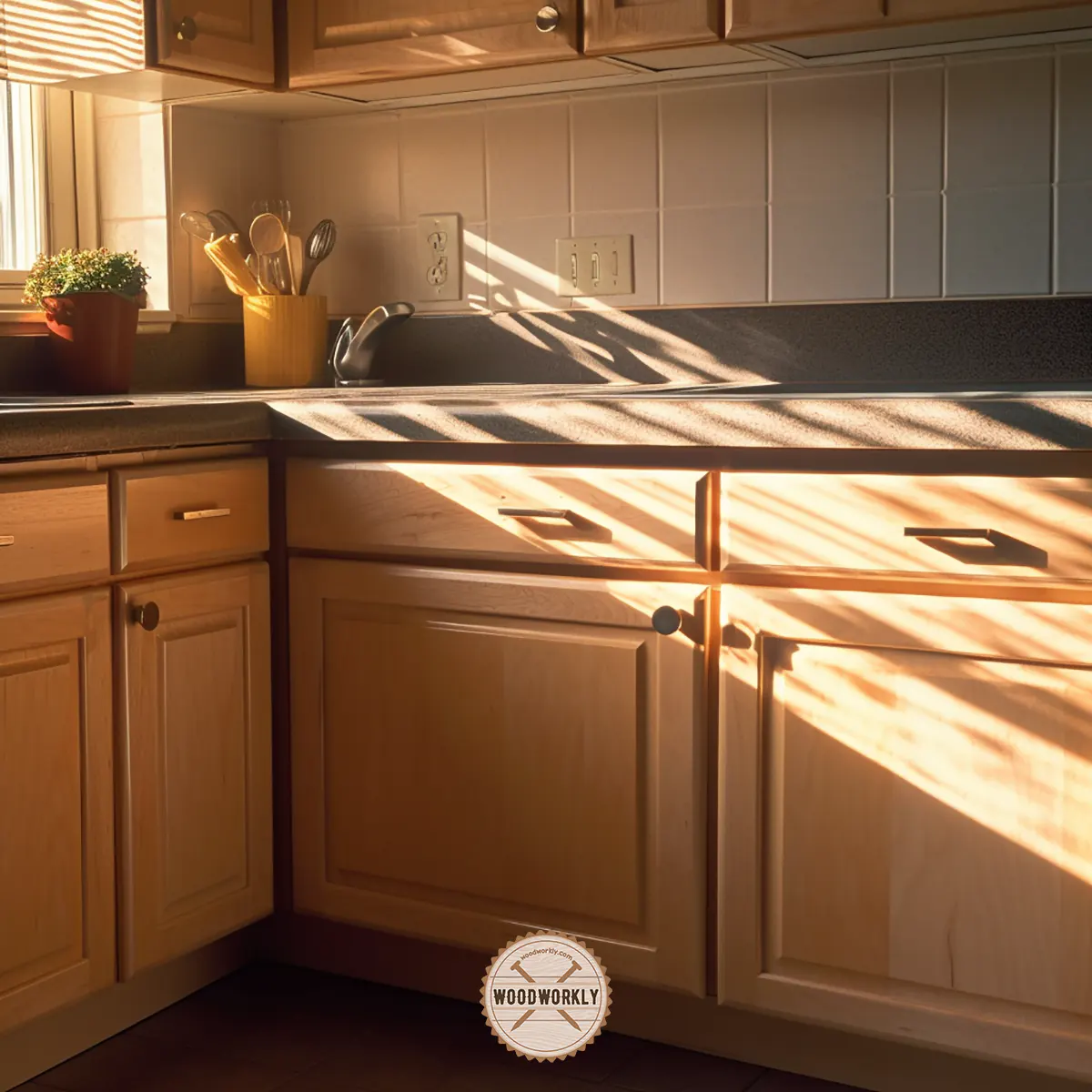
Basswood Hardness Comparision
Likewise, Basswood has a Janka hardness value of 410 lbf (1,824 N). Here’re the Janka hardness values of popular wood types to get an idea about how hard Basswood is compared to them.
| Wood species | Hardness value |
| Brazilian Walnut | 3,684 lbf (16,390 N) |
| Red Mahogany, Turpentine | 2,697 lbf (12,000 N) |
| Brazilian Cherry, Jatoba | 2,350 lbf (10,500 N) |
| Golden Teak | 2,330 lbf (10,400 N) |
| Hickory, Pecan, Satinwood | 1,820 lbf (8,100 N) |
| Hard Maple, Sugar Maple | 1,450 lbf (6,400 N) |
| White Oak | 1,360 lbf (6,000 N) |
| Ash (White) | 1,320 lbf (5,900 N) |
| American Beech | 1,300 lbf (5,800 N) |
| Red Oak (Northern) | 1,290 lbf (5,700 N) |
| Yellow Birch / Baltic Birch | 1,260 lbf (5,600 N) |
| Teak | 1,155 lbf (5,140 N) |
| Black Walnut, North American Walnut | 1,010 lbf (4,500 N) |
| Cherry | 995 lbf (4,430 N) |
| Black Cherry, Imbuia | 950 lbf (4,200 N) |
| Red Maple | 950 lbf (4,200 N) |
| Douglas Fir | 710 lbf (3,158 N) |
| Silver Maple | 700 lbf (3,100 N) |
| Alder | 590 lbf (2,624 N) |
| Hemlock | 540 lbf (2,402 N) |
| Black Spruce | 520 lbf (2,313 N) |
| Sitka Spruce | 510 lbf (2,268 N) |
| Cypress | 510 lbf (2,268 N) |
| White Spruce | 480 lbf (2,135 N) |
| Basswood | 410 lbf (1,824 N) |
| Redwood | 420 lbf (1,868 N) |
| Engelmann Spruce | 390 lbf (1,735 N) |
| Sugar Pine | 380 lbf (1,690 N) |
As you can see even though basswood considers a hardwood, it has placed way below in the Janka hardness scale.
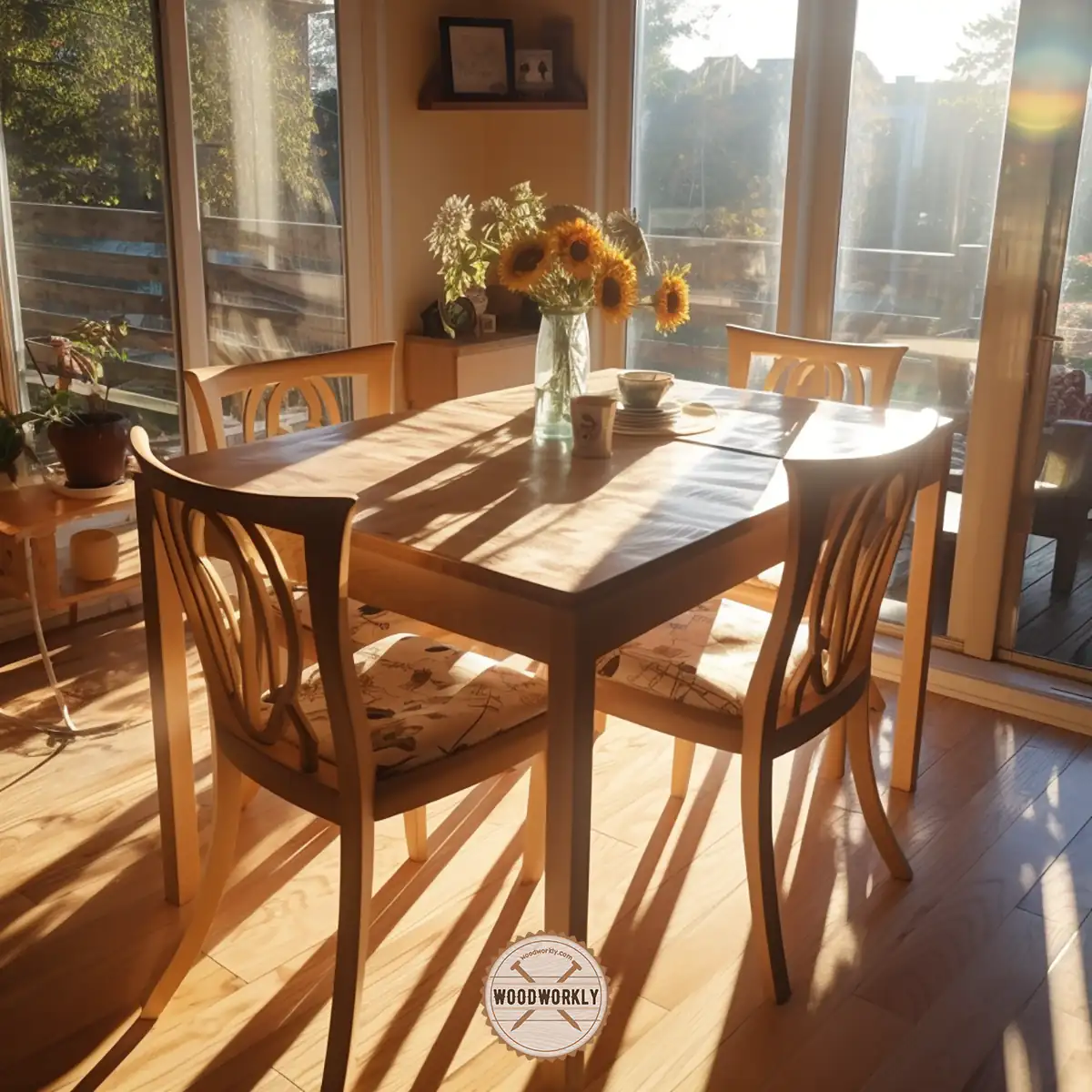
So, let’s have a look at the characteristic qualities of Basswood to figure out what makes basswood so special over its lower hardness.
Basswood Characteristics
Basswood is a light brown to pale white wood with uniform straight grain throughout the wood. wood grain has even texture and natural luster.
Because of having a low hardness value and low density, the workability of basswood is high. it can easily cut and curl finely using woodworking tools.
It nails screws and glues very well. Sanding, staining, and painting are also easier than most hardwoods.
Therefore, even a beginner in woodworking can easily work with basswood to learn new techniques and sharpen their woodworking knowledge.
Because of its lightweight, soft, and low density, Basswood has poor strength properties.
But it has good dimensional stability which is useful in wood carving to add fine details.
Basswood has no harmful chemicals and there is no clear difference between heartwood and sapwood.
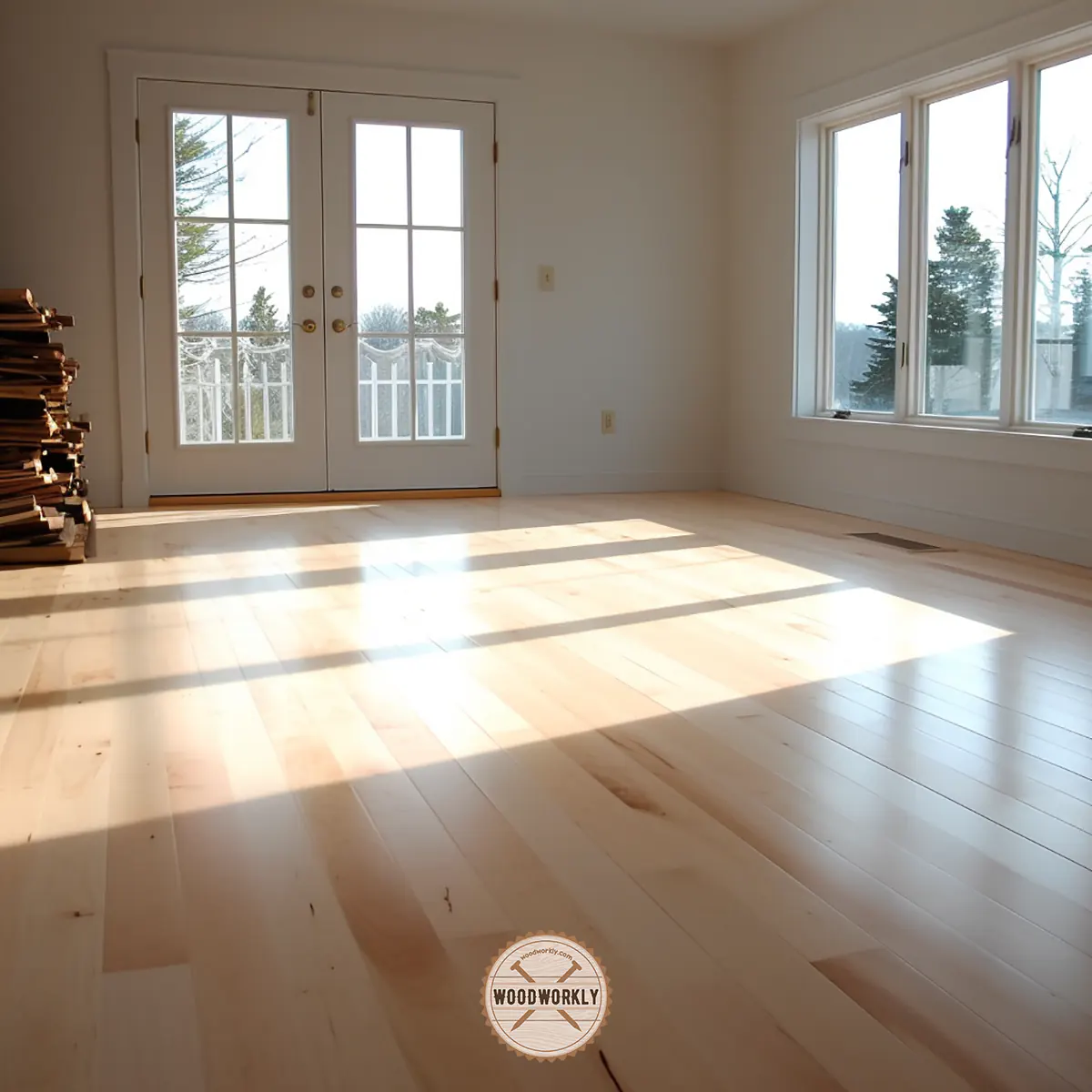
Overall, here’re the main significant qualities of Basswood,
- Hardwood
- Lightweight
- Poor strength
- High workability
- Low density
- High stability
- Light in color
Here’re the main characteristic features of Basswood,
| Color | Pale white to light brown |
| Density | 0.3 kg/m3 – 0.6 kg/m3 |
| Hardness | 410 lbf (1,824 N) |
| Stiffness | 1.46 Mpsi |
| Wood Type | North American Hardwood |
| Applications | Carving, Molding |
As you can see the density of basswood is significantly less.
If you’re looking for low dense lightweight wood for your next woodworking project, basswood is the best option for you.
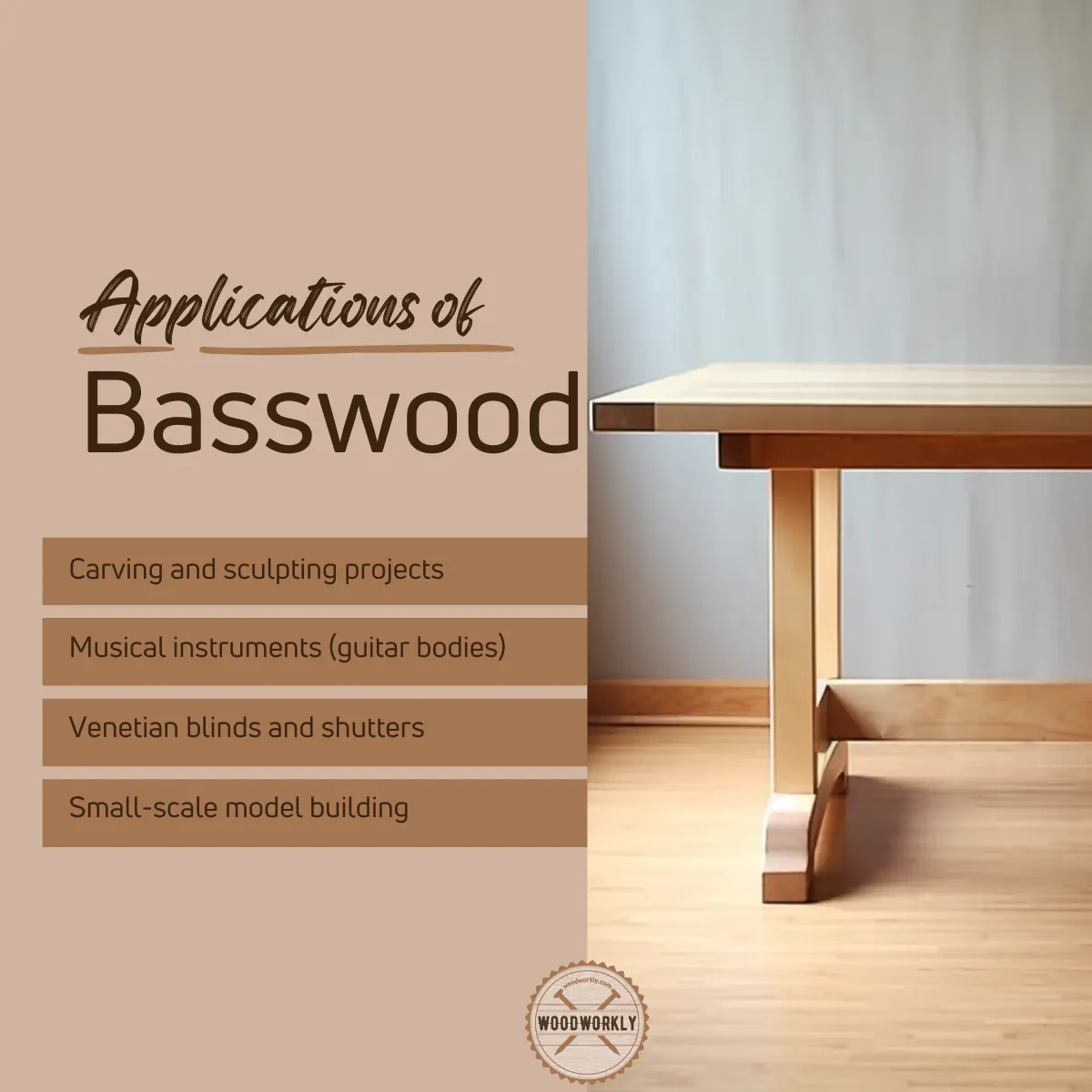
Let’s find out what are the advantages and disadvantages of basswood in terms of its hardness.
Pros And Cons Of Basswood
| Pros | Cons |
| Easy to work with | Poor durability |
| Lightweight | Poor strength |
| Soft hardwood | Prone to insect attacks |
| High dimensional stability | No rot resistance |
| No characteristic odor | No water resistance |
| Smooth surface | |
| High availability |
As you can see even though basswood is considered a wood with low hardness, poor density, and weak, it has so many advantages over disadvantages.
Most of those disadvantages can be skipped by using basswood for the right applications.
So let’s find out what applications that can use basswood as a material.
What Is Basswood Used For?
Basswood can be used for the following applications,
- Wood carving projects
- Musical instruments
- Boxes
- Crates
- Molding
- Lumber
- Veneer
- Plywood
- Fiber products
- Small woodworking projects
Because of having good stability and being lightweight, the carving is the best application of basswood.
Resistance from the environment, scratches, and dents can be solved by applying a good coating over the basswood surface.
I never recommend basswood for construction projects and outdoor furniture because of its poor durability.
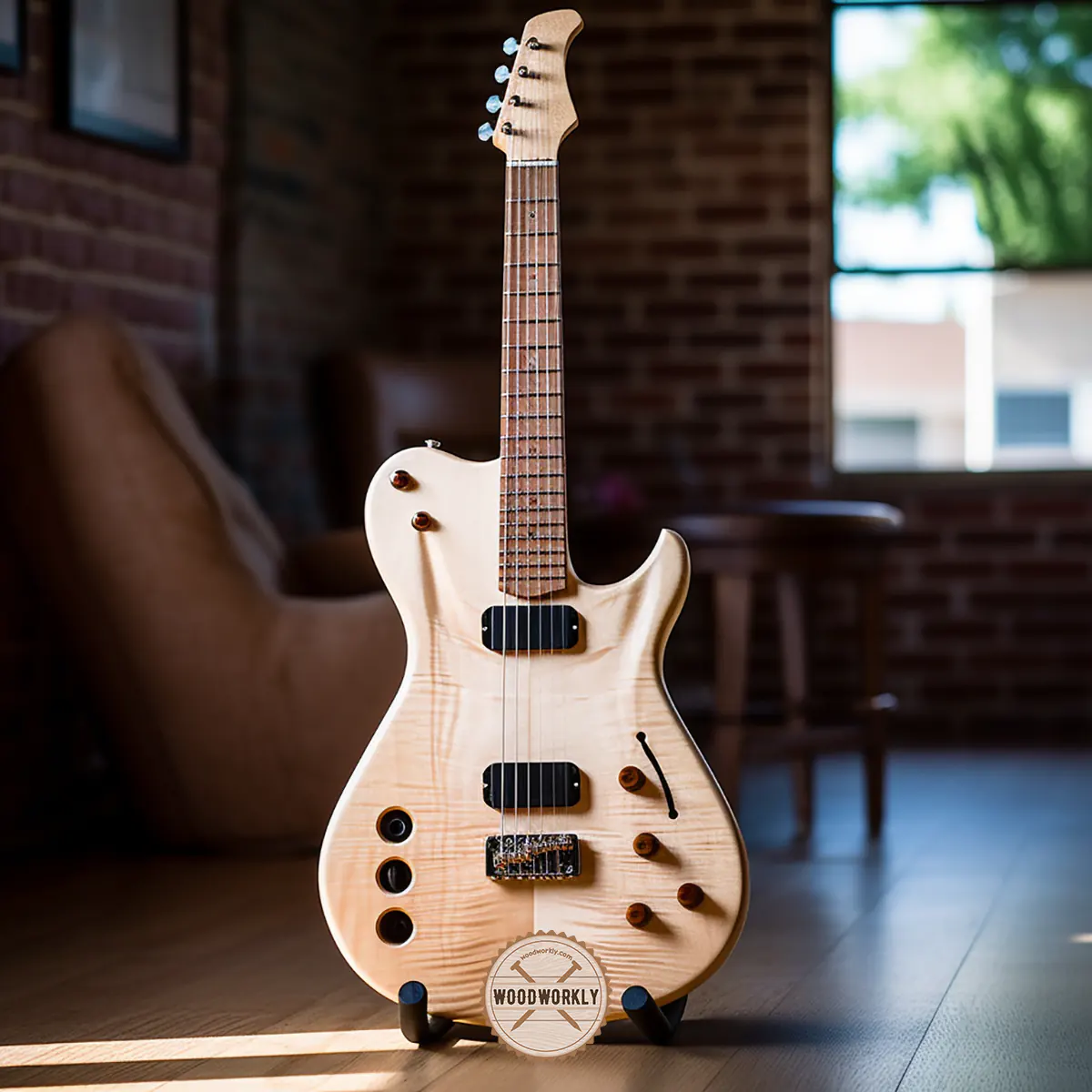
Is Basswood a Strong Wood?
Basswood is not particularly strong. The compressive strength and bending strength of basswood are significantly lower than most other types of wood.
Here’re the compressive strengths and bending strengths of basswood,
- The compressive strength of basswood is 4,730 psi
- The bending strength of basswood is 8,700 psi
Because of having poor strengths compared to other hardwoods, basswood cannot be used for applications that work against force and handle heavyweight.
It can only use for small woodworking applications.
That’s it, folks! hope you learned everything you wanted to know about, is basswood a hardwood with all the properties of the wood.
Let’s see the hardness of basswood compared to several other popular wood types.
Is Basswood Harder Than Pine?
Basswood is harder than White Pine and Sugar Pine but softer than Yellow Pine.
Even though Pine is known as a hardwood that comes from a coniferous tree, it has nearly similar or higher hardness than basswood.
According to the Janka hardness scale, here’re the hardness of basswood and Pine,
| Wood Type | Hardness |
| Basswood | 410 lbf |
| Sugar Pine | 380 lbf |
| White Pine | 380 lbf |
| Yellow Pine | 870 lbf |
As you can see yellow pine is significantly harder than basswood.
This is one of the best examples of not all the softwoods being soft and not all the hardwoods being hard as well.
Is Basswood Harder Than Balsa?
Basswood is harder than Balsa. Balsa is lighter and stronger than basswood.
Balsa has an excellent strength-to-weight ratio which is extremely useful in making aircraft models.
Even though both basswood and balsa consider hardwoods, both are soft and less dense.
According to the Janka hardness scale, the hardness of basswood and balsa is as follows,
| Wood Type | Hardness |
| Basswood | 410 lbf |
| Balsa | 70 lbf |
As you can see balsa wood is significantly softer than basswood. This is what balsa wood makes so special.
Having less hardness while having great strength is a unique feature balsa wood has.
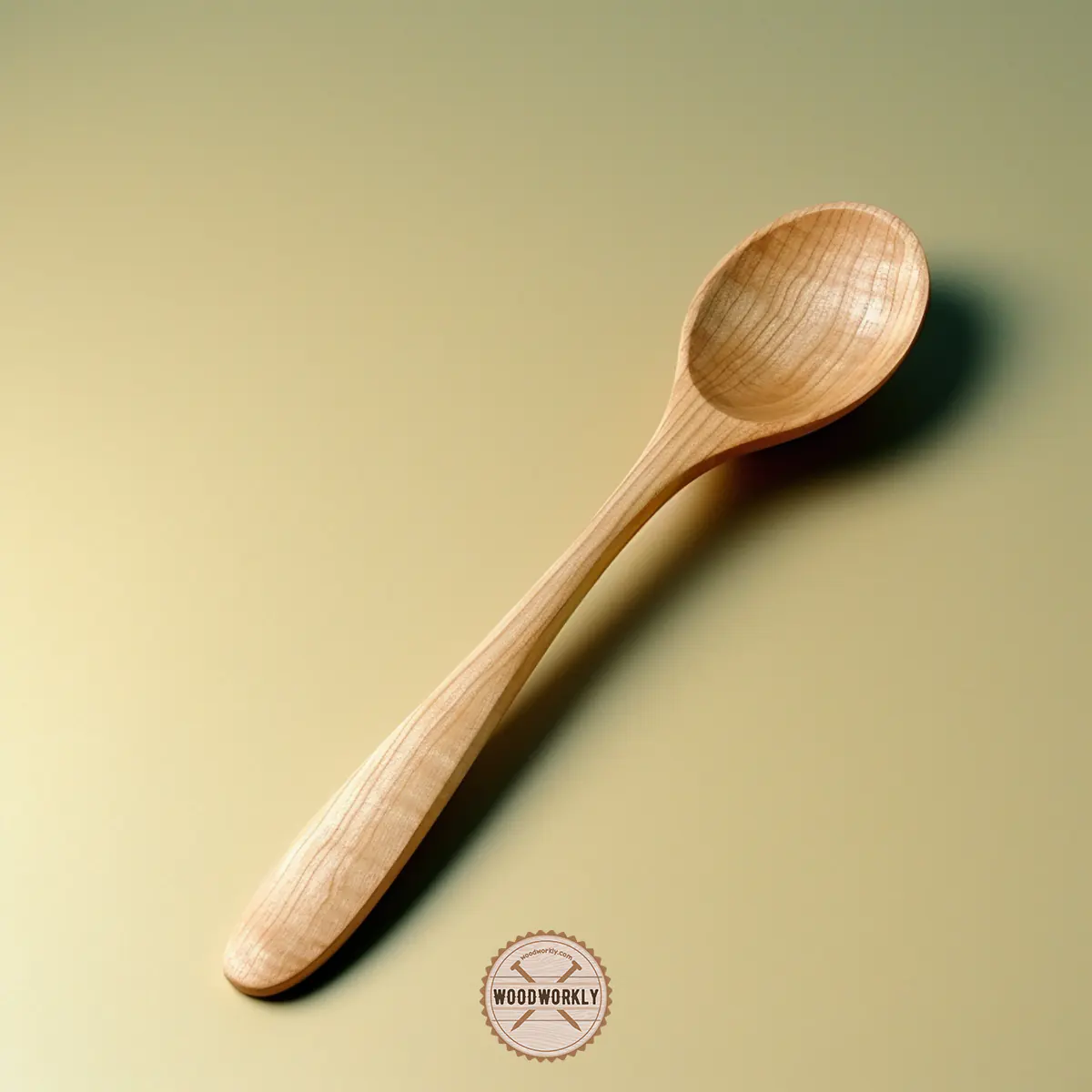
Is Basswood Harder Than Maple?
Maple is harder than basswood. Both hard maple and soft maple are so much harder and denser than basswood.
The strengths of maple wood are also higher than basswood.
According to the Janka hardness scale, the hardness of basswood and maple is as follows,
| Wood Type | Hardness |
| Basswood | 410 lbf |
| Hard Maple | 1,450 lbf |
| Soft Maple | 950 lbf |
Is Basswood Harder Than Poplar?
Poplar is harder than basswood. Both basswood and poplar are considered soft hardwoods because of their poor hardness values.
According to the Janka hardness scale, the hardness of basswood and poplar is as follows,
| Wood Type | Hardness |
| Basswood | 410 lbf |
| Poplar | 540 lbf |
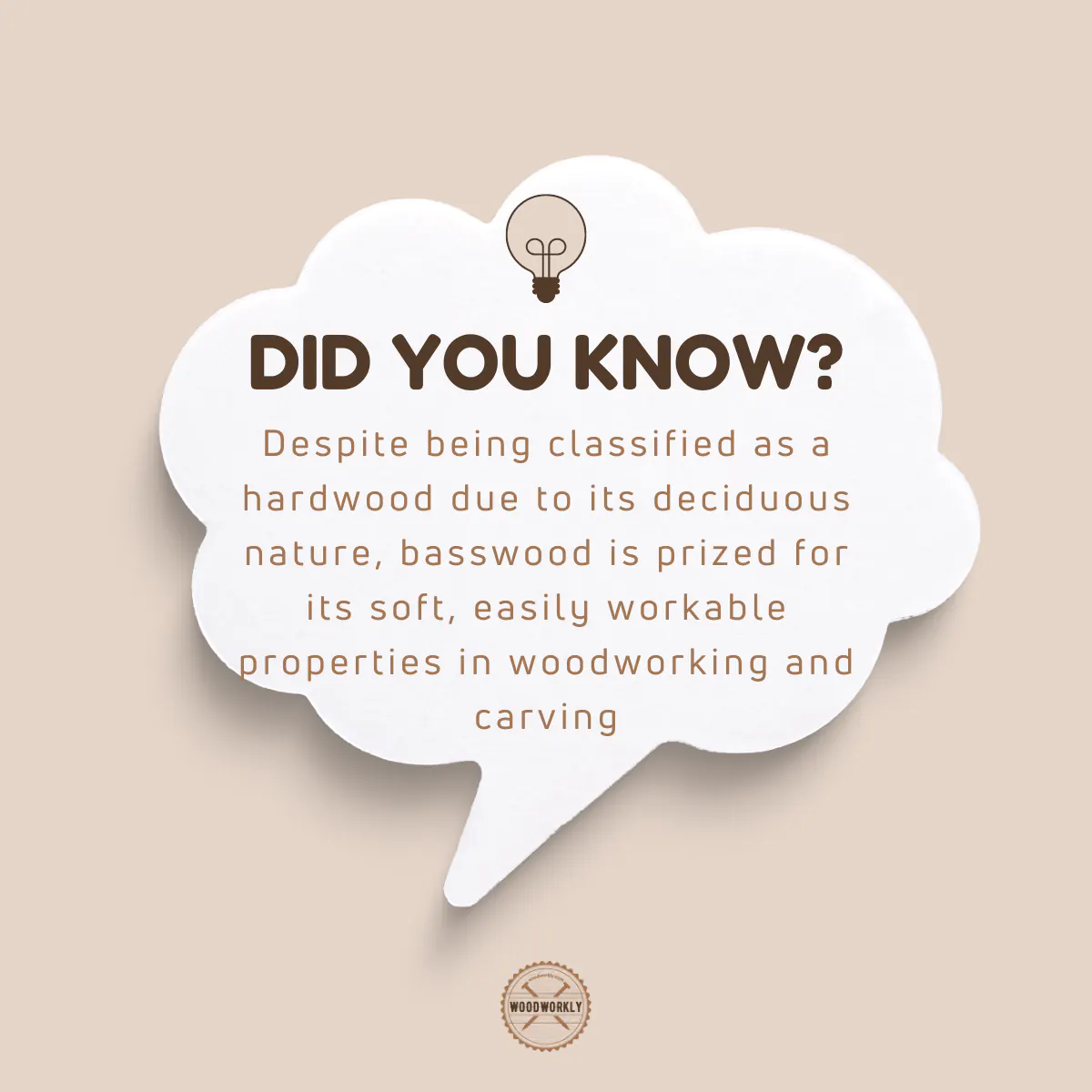
So, let’s answer some frequently asked questions as well.
FAQs
Is basswood a hardwood or a softwood?
Despite its softer texture, basswood is classified as a hardwood. This may sound counterintuitive, but remember, the distinction between hardwood and softwood isn’t about the physical hardness or softness of the wood.
What makes basswood unique among other hardwoods?
Basswood stands out for its light weight, easy workability, and uniform color. It’s a versatile hardwood, ideal for carving and other intricate woodworking tasks due to its soft, stable nature.
How does basswood respond to finishing?
Historically, basswood developed a “fuzzy” surface when sanded, making finishing a challenge. However, with modern machinery and techniques, this issue has been largely addressed, allowing for smoother finishes.
What color is basswood?
Basswood exhibits a uniform color palette that ranges from creamy white to a very pale brown. Its subtle, elegant tones are a charming feature, often appreciated in decorative and functional applications.
Is basswood suitable for outdoor use?
While basswood is highly workable and attractive, it’s not the most durable for outdoor use. Its relatively lower resistance to decay and pests makes it more suited for indoor projects.
Where is basswood commonly found?
Basswood, or Tilia Americana, is native to North America. Despite not being a front-runner in timber production, it makes up a significant portion, estimated around 5-8%.
Is Basswood sustainable?
Basswood is considered a sustainable wood source. However, like with any timber, it’s crucial to source it responsibly to ensure the health and longevity of these valuable forest ecosystems.
Did I cover all you wanted to know about: Is Basswood a Hardwood?
In this article we have widely talked about is basswood a hardwood and how hard basswood is by taking its characteristic qualities with pros and cons.
basswood is considered hardwood. Despite its light, soft texture, it falls under the hardwood category because it’s from a deciduous, or leaf-bearing tree, scientifically known as Tilia Americana. Its unique properties make it a preferred choice for many woodworking tasks.
Furthermore, I’ve answered some frequently asked questions as well.
Hope you have gained a good piece of knowledge about, is basswood a hardwood with its various applications.
So, let’s begin your next woodworking or woodcarving project with beautiful basswood. Have fun in woodworking!